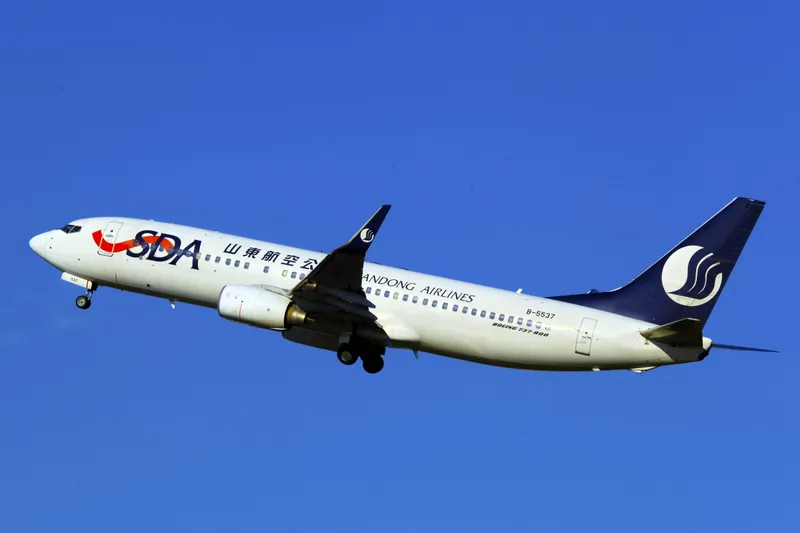
Panic gripped passengers aboard Shandong Airlines Flight SC4667 when loud bangs and a burnt smell filled the cabin mid-flight
Mid-Air Mayhem: What Happened on Flight SC4667?
Terror at 30000 Feet – On June 27, 2025, Shandong Airlines Flight SC4667, a domestic route from Qingdao to Shanghai, experienced a terrifying mid-air emergency that forced the aircraft to divert and land in Nanjing. The airline later confirmed the incident was due to an “aircraft malfunction,” though eyewitness accounts suggest a more alarming scenario.
Table of Contents
According to passengers, the ordeal began with a series of loud bangs, followed by violent lateral shaking of the aircraft and a pungent burnt smell that lingered for nearly ten minutes. One passenger described the experience as “terrifying,” noting that the plane tilted side to side by nearly 10 degrees.
A social media post by a traveler claimed that an object may have been sucked into the aircraft’s left engine, potentially triggering the malfunction. While this detail remains unverified, it aligns with the symptoms of a partial engine failure or foreign object ingestion.
Despite the chaos, the flight crew remained composed. The captain promptly announced an emergency landing and diverted the aircraft to Nanjing Lukou International Airport. The landing was executed smoothly, drawing praise from passengers and aviation experts alike.
Calm in Crisis: Crew’s Swift Action Averts Disaster
Shandong Airlines has since issued a statement confirming the emergency landing and commending the crew for following standard safety protocols. “All affected passengers have been properly accommodated, and another aircraft has been dispatched to operate subsequent flights,” the airline said.
The incident underscores the critical importance of pilot training and emergency preparedness. In this case, the crew’s rapid decision-making and adherence to safety procedures likely prevented a far more serious outcome.
Key safety actions taken:
- Immediate communication with air traffic control
- Controlled descent and diversion to the nearest suitable airport
- Calm and clear instructions to passengers
- Post-landing inspection and passenger support
Aviation analysts have noted that the aircraft’s response to the malfunction—despite the dramatic symptoms suggests that redundant safety systems functioned as designed. The aircraft’s ability to remain stable and land safely is a testament to both engineering and human skill.
Broader Implications: Safety, Transparency, and Trust
While no injuries were reported, the incident has reignited public concern over aviation safety standards in China, especially amid a recent uptick in mechanical issues and emergency landings across Asia.
Questions now being raised:
- Was the aircraft’s engine properly maintained?
- How quickly will the airline release a full technical report?
- Are there systemic issues in quality control or inspection protocols?
Shandong Airlines, a subsidiary of Air China, has a generally strong safety record. However, transparency in the aftermath of such incidents is crucial to maintaining public trust. Aviation authorities are expected to conduct a thorough investigation, including engine diagnostics and black box data analysis.
Meanwhile, passengers have taken to social media to express both gratitude and concern. While many praised the pilots for their professionalism, others questioned how such a malfunction could occur mid-flight.
“Thumbs up to the Shandong Airlines pilots,” one user wrote. “But I hope we get answers soon. That was the scariest 10 minutes of my life.” As air travel rebounds post-pandemic, airlines face renewed pressure to prioritize safety over speed or cost-cutting. Incidents like this serve as stark reminders that even routine flights can turn perilous in seconds and that vigilance, training, and transparency are non-negotiable.
Stay updated with the latest news on Rapido Updates. Keep yourself updated with The World, India News, Entertainment, Market, Automobile, Gadgets, Sports, and many more
Also read –
China’s J-20 Stealth Fighter: A Technological Marvel or a Stolen Blueprint?
China Expands Naval Presence: 2 Aircraft Carriers Operate in the Pacific for the First Time